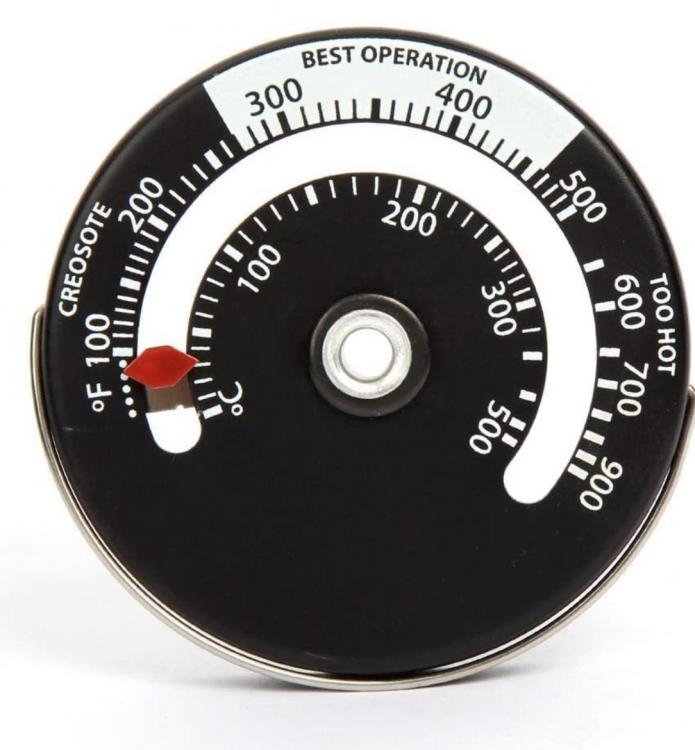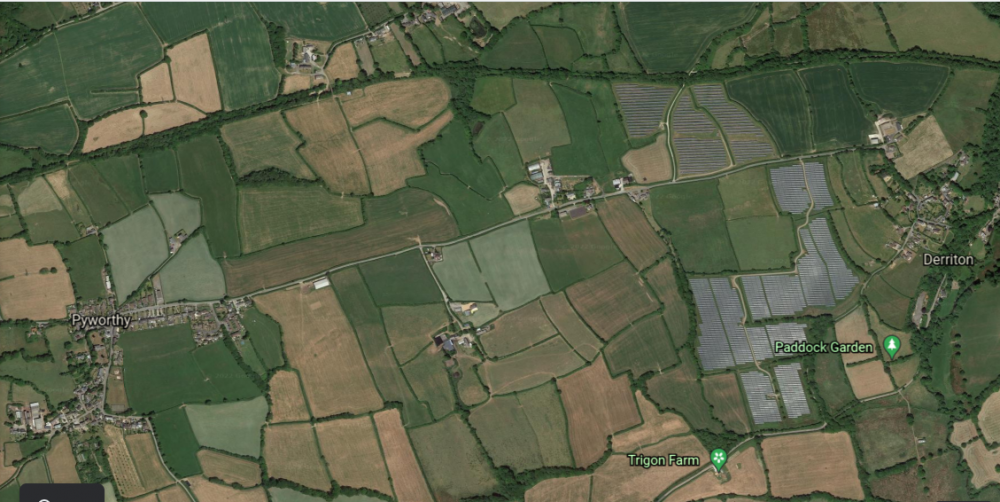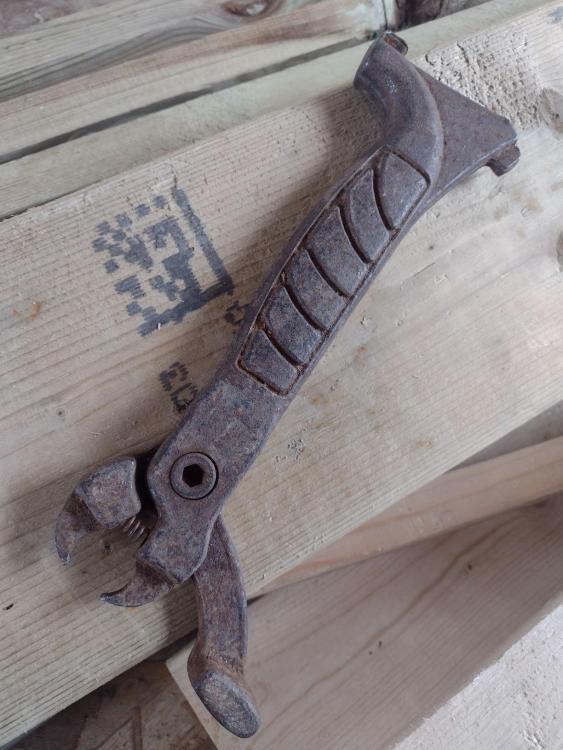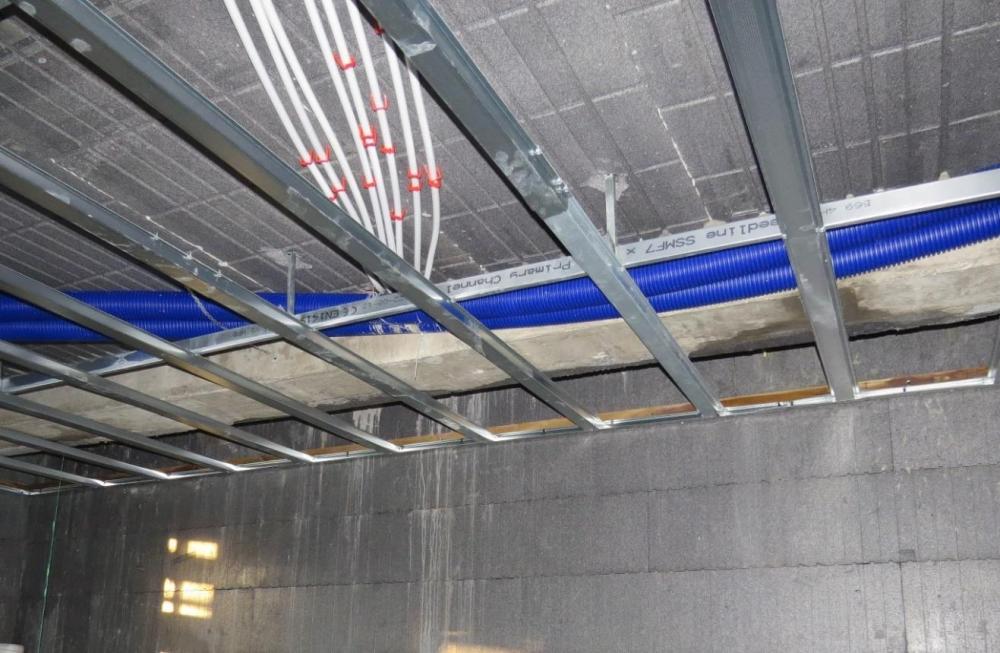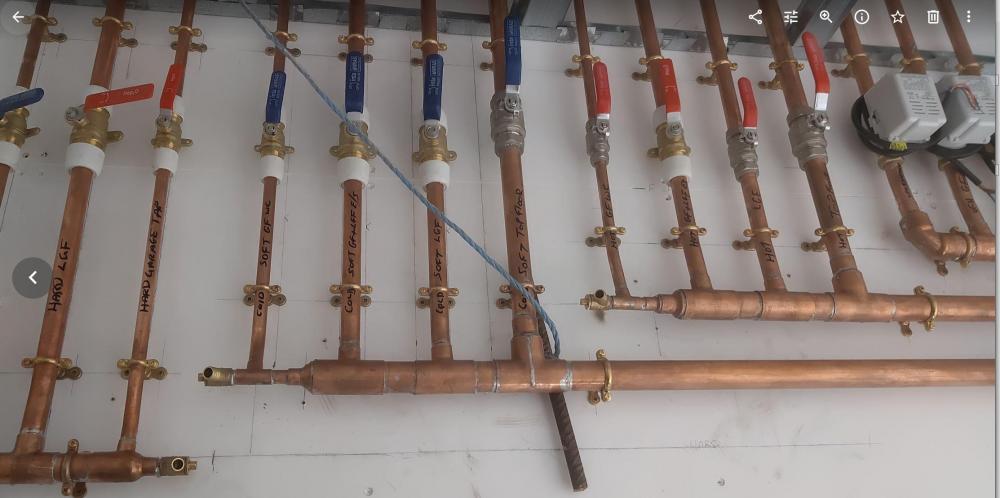Leaderboard
Popular Content
Showing content with the highest reputation on 02/09/22 in all areas
-
Do you have a breakdown of the costs showing which parts are contestable? Depending on the works, you may need a DNO approved contractor or you can DIY to their spec. As mentioned, best solution would be a pole mounted transformer connected to a meter kiosk near your boundary. Then you can run your own cable underground to the house.3 points
-
Ok. The defrost cycle requires heat to be conveyed from one place to the other. So; To heat your house the external heat exchanger ( big box with fans that lives outside ) is utilised to collect low grade heat energy from outside air. That is collected and transported by the F-gas in the gas lines which travel from that external box to the internal compressor unit ( inside the bedroom ) eg the unit where all the current noise and pain emanates from. The F-gas goes into the compressor and it chugs away producing the higher grade heat which is then pumped around your radiators and DHW tank to make them ‘hot’. That is “heating mode”. So, after doing heating mode for a long time in adverse external conditions the external heat exchanger starts to get so cold it starts to freeze up, continuing to do so until the brain box realises this and takes action. This is called “defrost mode”. In defrost mode the whole process is reversed. The water gets circulated around the heating system so the heat energy in that water, even if it’s cold, can be sent to the internal compressor unit to have that heat energy sucked back out. That heat energy gets converted and sent back to outside via the F-gas lines to the external heat exchanger. That elevated gas temp in the external heat exchanger causes it to melt the ice. The brain box waits until the F-gas temps tell it that icing is no longer present and the system resets. If there is still call for heating it will then do the whole process over again……possibly more than once per evening. If it is doing this when heating is turned off then it’s a design or software fcuk up, plain and simple. Nothing external with an F-gas heat exchanger needs antifreeze to prevent ‘freezing’ and there is no need for frost protection as outside air temps won’t make a toss of difference to this system / cause damage in extreme weather ( if as I said the heating demand is off at that time ). Regardless of whether the external unit is at 0oC or lower, the system should not boot up to to ‘defrost’ it, as that is not necessary. If the heating was called for at that time, whilst the external heat exchanger is Baltic cold, the brain box would just check to see if the F-gas temp suggests the external unit is indeed an ice cube and would then initiate a defrost cycle and initiate that reverse of heat energy flow as above ( eg start your radiator pump circuiting water to steal that heat for the purpose of defrosting the external heat exchanger ). To now answer your actual question. The water in your heating circuit MUST circulate in defrost mode. If it didn’t then the internal compressor would just absorb the heat energy in the slug of water that was in that heat exchanger and then have no more access to the heat energy from the heating circuit water. You see it must circulate that water, or when in reverse ( aka defrost mode ) it would have nowhere to get the required heat from to send back outside via the noisy compressor. I have not gone balls deep in scientific facts here, so the rest of you don not nit-pick please!! Ok #2. This unit and all its ugly attributes, characteristics and annoyances will be leaving, ( if you just give the order ), so essentially this was a waste of my time typing out. However; As you felt hard done by with some of the previous comments, ( and I genuinely apologise if any of mine actually offended or upset you in any way, I was just trying to add some joviality in my own ‘quirky’ way ), I have made this final effort to try to help you move on with your life snd to understand how the current sack of shit is functioning. I highly expect you to reply to say that at 02:54 there was no need for this to go into defrost mode, and none of this should be happening, but I honestly don’t care anymore about what your current setup is doing because it needs ripping out and binning. Simples. It’s already dead and buried afaic so PLEASE move forwards and end this madness. I would have used more capital letters but one of my previous replies used up my 2022 quota of capitals……so, to type the above I had to buy a £5 add-on to my capital letter allowance. Hope I don’t need another lot until my allowance refreshes 01 jan 2023….. sorry, not enough left for a capital j in jan. Get the new system fitted. For the love of Christ.3 points
-
If you carry on, I'll buy another £5 worth of capital letters to tell you to fcuk off We're making progress, stop with the negative waves, baby.2 points
-
Renewable Energy Shouldn’t be Blamed for Spiking Energy Prices — It's the Solution January 24, 2022 By Joel Jaeger, Tatsatom Gonçalves, Arya Harsono and Lori Bird Cover Image by: Karsten Würth Commentary Electricity, natural gas and oil prices have risen globally in recent months, causing hardship for many people around the world. Europe is at the center of the crisis, with natural gas prices increasing 400% last year, raising household bills and putting multiple energy companies out of business. Other countries like China, Brazil and the United States have also experienced higher-than-normal energy prices. Global oil prices are at the highest level in seven years. Here, we unpack the causes and the effects of the energy crisis and what that means for the future of clean energy. COVID-19: A Historic Energy Supply and Demand Shock The energy crisis has been caused by multiple overlapping factors on both the supply and demand sides, driven by the pandemic. The pandemic caused a market disruption larger than the world has ever seen before. Energy demand dropped sharply in 2020 during various lockdowns around the world. Prices fell, so fossil fuel production and investment in fossil fuels decreased. In China and elsewhere in the Northern Hemisphere last winter was especially cold, depleting coal and gas stockpiles. The pandemic also caused energy producers to postpone maintenance and repair work, slowing everything down. Then, in 2021, as demand rebounded strongly, energy supply was unable to ramp up fast enough, causing the price increases. In normal times, these market forces would have re-balanced themselves toward a price equilibrium, but with COVID supply chain disruptions, shipping delays and protectionism, global trade was inadequate to balance the supply and demand fluctuations and shortages. On top of all this, and perhaps most crucially, oil and gas producers like Russia and Saudi Arabia reportedly restricted gas and oil production for export to keep prices high and maximize their profits and strategic position. Clean Energy is Not the Problem. It’s the Solution. Some commentators have claimed that renewables are the cause of the energy crisis Europe is experiencing. They point out that the biggest spike in European electricity prices coincided with lower-than-average wind generation, but in reality this only temporarily added some pressure on electricity markets. Wind generation in Europe has resumed adequate production; in fact there were record amounts of wind power at the end of the year while energy prices continue to be high. Based on our analysis, the amount that electricity prices have spiked in a given country does not seem to have a strong correlation to its level of wind and solar energy production. China, which has about 10% wind and solar electricity, experienced a major electricity crisis. The U.S., at 12% wind and solar, has largely avoided it. Less than 1% of Singapore’s electricity comes from wind and solar, yet Singapore’s wholesale electricity prices spiked by six times in November of last year. As International Energy Agency (IEA) Director Fatih Birol puts it, the problem is not that there is too much clean energy — it’s that there is too little. The world has been chronically underinvesting in energy supply and transmission infrastructure. Global energy demand has been increasing over the past five years but total spending on energy has been flat. The mismatch between energy supply and demand is not a sign to slow down the low-carbon transition. In fact, it is a call to ramp up clean energy, energy efficiency, and infrastructure investments to ensure continued reliable and resilient supplies. This would make countries in Europe and elsewhere less vulnerable to geopolitical or economic choices by suppliers. The Advantages of Renewable Energy One advantage of renewable energy is that the power prices are generally stable. Once the solar and wind farms are built, all they need is the sun or the wind. In contrast, electricity from gas or coal requires continuous fuel supply, which is vulnerable to disruptions in production and transport. Fossil fuel price spikes like this have happened before and will happen again. Meanwhile, the costs of solar have dropped 85% since 2010 and the costs of both onshore and offshore wind have dropped about 50%. For residential or commercial energy users, investing in renewable energy, energy efficiency or other climate-friendly technologies can be a buffer against the market forces that affect fossil fuels. European households equipped with solar panels are saving an average of 60% on their monthly electricity bills during this crisis. Meanwhile, in the U.S., households heated with electricity will be largely unaffected by the crisis, only expected to see a 6% increase in their bills compared to last year, while households heated with natural gas are expected to spend 30% more. Increased investment in renewable energy will increase supply and reduce prices. According to the IEA, if the world invests enough in clean energy to reach net-zero emissions, average household energy bills in advanced economies will be lower in 2030 and 2050 than they are today. This is not to mention that renewable energy creates more jobs than fossil fuels. Challenges Renewable Energy Must Overcome None of this is to say that the transition to clean energy will always be smooth and easy. As renewable penetration grows, it will be important to invest in solutions that can address weather related variability, such as long-duration energy storage solutions. Governments also need to expand and modernize transmission and distribution grids to increase reliability, efficiency and accessibility. It will be essential to bolster energy systems with protections against severe weather-related events, such as fires, hurricanes and heat and cold waves. In the short-term, governments of countries affected by the energy price hikes will need to take measures to assist vulnerable households. This can be done by directly providing money to these households to help with their bills and investing in energy efficiency to reduce the energy burden that consumers shoulder. Then in the longer term, governments should ramp up investment in clean energy generation and storage. This is the best way to avoid future energy price spikes and address energy poverty challenges.2 points
-
Im here going through your reassuring super helpful reply Nick, & digressing thinking of 80's soft peugeout seats. That is fantastic help thanks- you must be awarded a BH cup of somesort ( longest ever post ? ). Ok that overview makes my mind up to accept this new thing, knowing its similarities to mine, are not quite as many as I feared. The defrost system you've clarified: kudos to you appreciated. I still have concerns, the defrost software is shared between system you see, & I'm not certain there is a compressor in my hydraulic unit box, but rather a noisy circulating pump ( so my main concern, this being a similar pump in the tank, in the same place, with the same defrost cycle... has unfortunately not been aleiviated by your info ). But I know Ive exhausted all your efforts to explain if this isn't so. So tbh choosing to accept this system - with this additional huge tank being the new core sticking point- it's resolutely pretty much the same HUGE gamble for me it ever was ( since this damn tank idea sprung on me 2 weeks ago by Vaillant). Im slightly, everso slightly more confident it won't go off the same midnight to 7 am incessantly, & problem- noisily, or even heard clearly just in the bedroom is ruinous enough IMHO. My confidence after your explanation? gone from 10% to 15%. Tops. So Im still85% sure it will be a nightmare/ same problems/ will be forced to pull the plug on the whole system each night ( in cold snaps ) to sleep because it will start this mode up. But we now will see,.. as I think now I've no choice but accept it. Thanks all. I'll put up the vaillant tank info sent to me, if any use here, next post below. Zoot.2 points
-
Sorry! Thought you were on about the ground floor floor! Ignore me, though airtightness membrane maybe still needed depending on what your trying to achieve1 point
-
Err yes it is … Knauf Aquapanel is listed as suitable for enclosing log burners due to its heat resistant properties Use Knauf AQUAPANEL® Cement Board Indoor when it comes to hot temperatures. Log burning stoves require surrounding walls that can withstand high temperature and are non-combustible. Knauf AQUAPANEL® Cement Board Indoor provides this protection as it easily withstands radiating temperatures up to 200C and is A1 non-combustible to EN 13501-1. It is the ideal substrate for non-flammable and heat resistant surface coatings and finishes as it will not warp, shrink or expand Are you sure that’s not 400°F..??? This is a standard magnetic stove thermometer and the outer ring is °F, the inner is °C I would say it’s fairly new and your rubbery smell is just the VOCs burning off the stove paint as it hardens.1 point
-
I'm sure you've done extensive research on this and may already have consulted this stuff, but generally speaking SPAB recommends the removal of all impervious materials used on wall in old buildings. Interestingly, in the linked technical advice by SPAB, it mentions damp rising up a wall due to this kind of material; https://www.spab.org.uk/sites/default/files/SPAB Technical advice note-Need for old buildings to breathe.pdf I think your ventilation strategy using an independent inner wall is the sensible choice as it will allow the wall to have its full breathing space without the bitumen. I can't think of why the bitumen needs to be there - what useful purpose does it serve other than to create a barrier against which the wall cannot breathe? Interestingly SPAB has introduced some guidance to the opposite effect where they suggest using capillary materials: https://www.spab.org.uk/advice/breathability-and-old-buildings I also don't think you need any holes in the wall, you just need to give it potentially a few years to dry out.1 point
-
1 point
-
1 point
-
1 point
-
Not the same sorry, so NO! You immersion will fizz away loudly as it superheats the water around it. An ASHP buffer receives heated water silently via the coil. If the pump is next to it you get the minute whir from the pump, maybe a small gurgle or rush of water when it starts up, but nothing like the chaos of an F-gas compressor. If the pump was remote ( away from the buffer at the external monoblock which it may well be ) then the cylinder will be near silent during operation. Where the pump that circulates water from the buffer to the rads will be something for zoot to discuss with his installers to see if they can locate it anywhere other than that bedroom. If it's a guest bedroom then no need to shit the bed afaic1 point
-
DO NOT DO THIS. ..!!! You may be creating issues not sorting them ..! It could be that the defrost etc should be daytime but switching it off forces it to do it the next xyz hours or something after it restarts.1 point
-
Agree. Who did you think would pay for the "green" (sic) revolution? Tax payer Who will pay for brexit/covid costs? Tax payer. Always the same. My intention is when I die ( about 300 hundred years from now ) then my carbon footprint should be zero. Then I would have 'cost' the planet nothing and my legacy will live on. I am still dellusional.1 point
-
Chats with folk in the industry, plus the constant dealings with DNO's and costs for new connections and costs for fortifications etc. Stinks of the UK public forking out and the energy companies dropping the dragnet to get that money from anywhere but their own coffers.1 point
-
No bed, it wouldn’t be strong enough to take the point load of the beams. Just roll out dpc and put beams on top.1 point
-
Errr, with the movement he stated eg gaps opening and closing?!1 point
-
Our local (Morecambe) lads at TS (well, one or two of them) bend over backwards to get you signed up . I didn't signed up - can't remember why now ....1 point
-
I am catching up on this thread and saw your picture. A very clever solution, on the first assumption that a green roof is wanted For the view from a balcony the green is a justifiable able decision I think. Otherwise I am not a believer. But the idea of a perimeter of stones is excellent. The green stuff really has to stop well short of the edge for various practical reasons (access/maintenance) The membrane has to be special anti-root stuff except it can't stand UV, hence the stones. The stony area will also allow some movement of water as in a french drain. The stones look good too, and are no heavier than the green area. I like it...in your circumstances.1 point
-
This gives you some suggested values. https://www.vent-axia.com/sites/default/files/Ventilation Design Guidelines 2.pdf volume of property is found by multiplying floor area by height to give cubic metres air. multiply this by air changes per hour ACH1 point
-
Our ceiling heights are only 2.4m, also the interior is going to be quite (very?) modern looking with floor to ceiling glazing so this would not work here sadly, but good idea otherwise. It is a bit more complex than this. I would have gone for spreader plates under the deck, but the Timber Frame supplier has a programme that does not allow time for me interlacing with plates and pipes. Moreover, the heat output of plates below 22mm deck is a lot less than pipes sitting directly under the finished floor layer. So overall, better performance and reaction time. I thought of routing in the MFC deck, but worried it would be quite laborious, and would weaken the deck integrity. EPS adds to the overall sound absorption too. Ground floor will have in-screed pipes, and the overlay is on 1st and 2nd floor.1 point
-
This is what we did with our neighbours. We had a chat, went through the paperwork and they signed agreement. Cost - zip ?1 point
-
1 point
-
It's kind of taken me 4 moths to get here, we broke ground start of January took a while to get the road and the rest of the ground built up with the stone (700 Tonnes circa!). But we have finally done the UFH, tied the mesh and then poured the concrete. UFH: Fitting the UFH was pretty straightforward to be honest. I had 1.1km of pipe to lay, and just planned it out as per the Wunda drg, I adapted a little as I went along to avoid awkward bits but it went fine. The UFH stapler was a godsend, made it Uber easy and was just great putting it into the insulation. The decoiler also a godsend, god knows how you would do it without one of those. Both well worth the purchase. I laid pipes out in concentric layout, it gives the most even heat distribution as a return is next to a feed pipe. It was fine doing it, i started with outer at 400mm centres and then turned back to leave me with 200mm spacing. Once back at the UFH manifold point I cut the pipe to confirm it wasn't burst and got a big whoosh of air (Wunda pipes come pressurised). The only mistake i made (or remember making was the lengths. I thought i had 11 100m loops, but turns out I had 10 loops at less than 100m, then 1 loop at 101m - which they supplied a 120m length for. Of course didn't realise that till the end and it was the last pipe to be laid...purely coincidentally. I took a slightly shorter route, but either that pipe was longer than 100m (I had at least 10m spare) or the length they worked out was wrong (unlikely) fortunately it worked out fine! I also used the clip track to secure them, which works well and sticks good to the insulation, doesn't do well at loops close to it but staples there sort it. I never fitted the manifold, I just used a clip track mounted high on a wee frame I built where the manifold will go. I didn't pressure test either....or pressurise for the pour, I wasn't concerned about holes as I was the only one there and I put 1000+ castles down to support the mesh to the heavy ground workers wouldn't' squash it on top. My pipes were laid on the insulation at the bottom of the concrete well away from the mesh and any chance of people drilling through them. I'm confident not pressuring will be fine during the concrete pour - those pipes are very resilient. Mesh: By Jesus - straightforward again, but f$ck me....the bloody wire tying loops. My back was dead..and i don't have any back issues, I was like Quasimodo bent over for days tying mesh together. I had a single layer on the main slab, with two layers in ring beam and three at sliders. I used maybe 1000 ties. The mesh castles worked well to support it and the hystools too to give the spacing. I defo didn't think about heights where your lap the mesh sheets as you end up 20-40 mm higher due to where triple sheets lap each other. So I have lots of spare hystools at 100mm. I had approx. 360m2 of mesh to put in, cutting it was done with stihl saw (quik cut) - made life easy. I also purchased a dewalt cordless grinder originally to do this but you would go through wheels like a maniac. So that was used for small cuts and came in handy trimming bits. The stihl saw (which i own anyway) made it easy. I did buy a set of 36" bolt cutters as someone said to use that - shit idea, mega hard and I'd have been there all day using them. They done two cuts, went back in the box and were returned to Toolstation. Rebates: I planned two flush thresholds for my sliders - I shuttered these using the 50mm packing that came with the Insulated foundation, worked ok - But i had to weight them down during the pour. Also - I worked the concrete below the long one, but forgot the short one and it left a space which I will fix this week prior to kit going up. I also done a shuttered section at my downstairs bathroom so I can fit a floor mounted shower tray. That worked fine - just need to dig it out. Concrete: We had C25/C28 Specified but just put in C35 as it was what the guys normally use. We had a lovely day for it, 14 degrees and sunny, went pretty well. We had a bit of a delay with the last part load - which was at garage, but turned out fine. We also done the pads too and just overfilled them with extra that was left, my pad heights externally to the footprint are for posts to support my canopy and ended up different heights but I just gave the kit supplier all the heights and then are cutting to suit. They are all well below the ground anyway. I wanted to power float, but I didn't manage to get it arranged and my guys didn't seem keen. I was going to do it myself, but ran the risk of doing it for the first time on my own slab and didn't want to majorly mess up what they had done as it would have been in the evening by myself. 36cube in total went in. The only issue I was left with was that the boys forgot the poker. They did the vibro screed and all areas were filled, but missing the poker meant that we missed the concrete under a slider rebate. The long one (4.6m) was fine as it floated up a little so I hurriedly spent some time moving it up and down working the concrete below it, then I added stones on top to level it off. I shoudl have done this with the short (3m) one but didn't think as it didn't float up. It's no major drama, getting some concrete this week and will fill it. It'll be a cold joint but it's at a slider with no wall attached. I added ducts for the island below the mesh to we can get power there. The day after the pour I cut a control joint and then I tried to cover it with plastic (DPM actually) but I was ill prepared and didn't have enough, so just stuck with watering it with a hose each day when I could. I did get a couple of small shrinkage cracks in the main slab where it dried too quickly (they had appeared the next morning) due to it being so sunny the day of the pour. But they are small and nothing to worry about. all in all happy. There is lots of other stuff I'm sure I forget but it always seems to elude me when I write a blog post. I also find it hard to find the time writing them - but that's self building for you! Pictures tell better stories! Lots included. I'm learning to not sweat the wee details, it's ok if things go a little pear shaped. It'll work out in the end. For now Foundations are finished and it feels good to be done here, we will backfill later and finish drains but that's in a few months. I just have DPM to fold up and attach this weekend (How do you fold up internal corners?!) prior to kit being delivered and erection starting next week. I've had two weekends off since the pour and it has been weird not being there every night and weekend. Things I learned: 1) Check all pipes lengths and lay them out first of all! 2) Buy the stapler 3) Buy the decoiler 4) Plan all your cuts out for mesh 5) Don't bother with bolt cutters 20210421_093630.mp41 point
-
As far as I’m aware and understand, once the process is in the hands of the conveyancer then both parties have given over their rights and designated the solicitor etc. As acting for themselves so an exchange of contracts is in effect a binding change of ownership1 point
-
A lot of ye are getting this wrong. As an architect we produce different drawings for different stages. We'd produce scheme design or outline drawings. These are used to get the agreed layout and size. Planning drawings are developed from these and then later we produce construction drawings. I've two large brick building on site currently (12 million & 8 million euro). I'd have got planning permission for them both 18 months ago. On planning drawings you show overall dimensions. Overall height, width, return wings, finished floor levels, distance to boundaries and neighboring buildings, etc. Windows and doors are default sizes such as 1000mm, 1500mm, 2000mm, etc but are never dimensioned at this stage. Remember only overall dimensions are used. During planning we work out fire and accessibility more as these have particular dimension requirements. eg with of fire corridor, doors, etc. Planning is granted and then we start detailed design. It's at this stage we then refine the dimensions. This takes a lot of time so no point doing it for planning drawings as often buildings get refused, don't secure funding, government changes and looses priority, etc. It's impossible for an architect to make money if they work out every brick dimension for planning and completely pointless. We've structural columns, movement joints, wind posts, floor buildups, ceiling voids, etc, etc. to incorporate. This is also why when people go off and try and build off planning drawings they can run into issues. When working on large housing developments of say 100+ housing units the attention to this brick dimensions and taking into account the thickness of plaster, lengths of timber, size of tiles, etc can save a contractor thousands in reducing waste and time but it takes the architect or their technician considerable time to calculate this which is why it's done only for the construction drawings. eg. as an example during detailed design the 12 million building grew 25mm in one direction and 45mm in the other direction to align to brick dimensions. At over 15 meters long this isn't an issue planning wise. These construction drawings will have no waste. If the planning drawings were used you'd be cutting bricks.1 point
-
@zoothorn will just move into his shed once the stove is installed, that will be warm and silent heat, apart from the odd pop from the burning logs.1 point
-
Looks like Internal Wall Area. So the external walls, but measured on the inside. Ignore that I posted above.1 point
-
Soundproofing I believe. If cut correctly to size it should stay put when inserted.1 point
-
1 point
-
Back to resistance heating at 30p.kWh-1. He will have to put the price up in the rented rooms.1 point
-
You are not wrong...far too close.. went brickhunting...sorted it all. Just a bit gutted I might just send the remains of the last pack back and them, if and when I need any more I will go and get some and hope the pack is a good mix or ask them to mix some for me.1 point
-
The chap that laid our grey riven slate sealed it before and after grouting. It still looks really good, so I think that's the way to go. Our grout is pale grey and does get quite dirty but I have recently invested in a steam cleaner which works really well. We love this flooring.1 point
-
Would you buy that car again, or would you buy a better one with a better crash test ( NCAP ) rating? VW Golf for example. Cheap as chips, strong as an Ox, great NCAP rating. We digress……… Anyhoo. Where’s Zoot? I cannot move onto the next life without sorting this first. The 21 virgins are starting to get impatient though!!1 point
-
So would I be, my heating energy for yesterday, divided by my total floor area, works out at 15W.m-2. And my house is over 30 years old.1 point
-
3 phase is a very tight fit in a standard recessed meter box dont forget. What we did was have 2 of the phases capped in the ground just below the hockeystick in case we needed them in future and have a normal single phase supply and meter.1 point
-
You can check with their tech dept and see if they’ll allow you to introduce a 6mm aggregate to the mix. With A38 you can, and it’s mixed on site with a paddle mixer so you just add as you go. I can ask my screed guy for you if you like? I mentioned using A38 on a previous project ( walk on in 45 mins, and lay ceramic tiles in 4 hours !!! ) and he mentioned another product which he said was better again. Can’t remember the name of it for the life of me, sorry.1 point
-
I’m looking into this too. Been recommended here: https://www.itstechnologies.shop/collections/12-solar-panel-kits-buy-online be interested if you find anywhere else better!1 point
-
Good question. We will be having MVHR. There will be a suspended ceiling on the ground floor. For upstairs the ducts will run up through the floor, we put down small EPS blocks attached to the rebar when they did the first floor concrete pour. I have attached a picture from the manual. We are not at this stage yet.1 point
-
From the street meter it's about 25m to the plant room - gentle curve in the pipe downhill where we end up with 3bar static pressure Good idea now to do the flow rate test and I guess we could easily enough do a dynamic pressure test as well - plumber is back in tomorrow. I saw on the GreatWater website that they claim 31 l/min at 1bar on the 1400 model and 45l/min at 1 bar on the 2300 model - see what pricing is like for them, looks like electric operated so can get recharge outside of normal shower times. @jack thanks for that - yes that sucks. As we have 3 bar and the softener we're looking at (probably like others) is OK with 5bar incoming I'll see what the plumber says- either no PRV or just a 3bar one after the softener. Actually having said that we have our hard water supplies of course before that so may be useful to have a PRV on the incoming or on the hard water manifold. The plumber enjoyed making my manifolds - he didn't like my Hep2O idea in the plant room and wanted it to look sharper - above ceiling level copper transitions to plastic so we can have nice ceiling cut-outs around the straight pipes.1 point
-
But Peter you see this happens with - your- system, mouselike non intrusive noise. But I have outlined, many many times, a clear picture of my ( albeit current ) circulatory frost mode conditions... which are so far removed from your lovely quiet system there, as can possibly be described. The potential problems are twofold; A) the new system shares the same anti- frost software, which implies it will also go on/ off/ on/ off incessantly allthrough the night/ small hours too. And B) the new system which I was told chosen because the new "problem cupboard box" would be relocated well away from bedrooms, & it "wouldn't be as loud" ( yeah right.. ), now Im just told.. includes a tank with a pump which can only physically go back in the very spot where Ive had the problems, negating the whole rationale for choosing this new system it seems to me. AND once I ask what on earth this tank actually is, Im told ( almost ironically, but not a joke afaict ) it's to facilitate the bloody frost mode. The very mode causing me the problems, solely, & only ever coming on in it's loudly audible, & incessantly irritating way it does, overnight.1 point
-
It’s simply cost Flow screed comes in about a third more expensive Most here don’t have an issue with drying times I laid ours at the beginning of summer and it was 6 months before I needed to put floor coverings down As tiling contractor I’ve found flow screed pretty bombproof1 point
-
Worth having a look at Duration, they have a show room on Canvey Island so not too far away. My mum had an aluminium sliding door from them which she's happy with, my brother fitted it for her and is now considering them for all the doors and windows in his mega extension and renovation starting this year.1 point
-
Have a look at your lenders approved warranty provider list. bit late if you haven't got one in place as they need to inspect from the start.1 point
-
@Moonshine - doing a review on the £/kg and it looks like the no brainer if going for acoustic performance is bog standard wallboard at 4.52 kg per £ I may as well double up on standard board which will give me a surface density of 16 kg/m2 at £3.53 per m2. That is a full pound pound cheaper per m2 than the most economical soundboard GTEC dB check, and gives an extra 3kg/m2 to boot. Why have soundboard at all? Is it a question of labour? @Nickfromwales - 100% correct on ply... a very expensive approach. I'll be doing it strategically as recommended1 point
-
I've been the professional worrier. But also decorating, labouring, cleaning up, digging0 points
-
You'd think but https://www.samconveyancing.co.uk/news/conveyancing/can-i-pull-out-after-exchange-of-contracts-370 says: We are often asked “Can I pull out after exchange of contracts?" and the answer is yes, however if you do pull out then be prepared to bear the costs - Click here to see the costs of pulling out after exchange of contracts." where it lists the seller costs as: * Costs of estate agents fees and any others related directly to the marketing of the property * Costs of conveyancing * In principle, any additional costs which might be incurred because of any delays to an ongoing purchase contract which a seller rescinding had entered into. which is almost nothing, maybe a few thousand? At least the buyer pulling out nets the seller 10% of the sale price (or whatever downpayment).0 points
-
0 points
-
0 points
-
Hot.. warm..? Didn’t say boiling ..? ? How do you clear the frost off the walk on glazing ….?? Shame you’ve not got some spares to see if we can experiment .. oh wait …0 points





